Abstract
In 1963 the World Health Organization established a system for collecting and distributing information on viruses. By 1970, 93 laboratories in 33 countries were participating. The present study is an analysis of the reports on coxsackieviruses A and B and echoviruses for the 4 years 1967-70. Among the coxsackieviruses A, type 9 was reported most frequently, and the most frequently reported coxsackievirus B was type 3. Among the echoviruses, types 9, 6, and 30 were common. In the northern hemisphere the season of highest incidence for each of the three groups was June—October; in the southern hemisphere it was November—February. Most of the infections were in children and the clinical manifestations usually included aseptic meningitis, respiratory disease, skin eruptions, undifferentiated febrile illnesses, and gastroenteritis. The relative frequency of an association of a virus with a clinical syndrome differed not only between the three groups of viruses under study, but in a number of instances between the types within a group. As is well known there were a number of instances in which a specific clinical syndrome was linked to certain specific viruses—e.g., hand, foot, and mouth disease to certain types of coxsackievirus A, and myalgia (Bornholm disease) and cardiac conditions to coxsackieviruses B. There was also an apparent relation between age and symptoms—e.g., those due to the coxsackievirus B associated with Bornholm disease in persons over 15 years of age.
Full text
PDF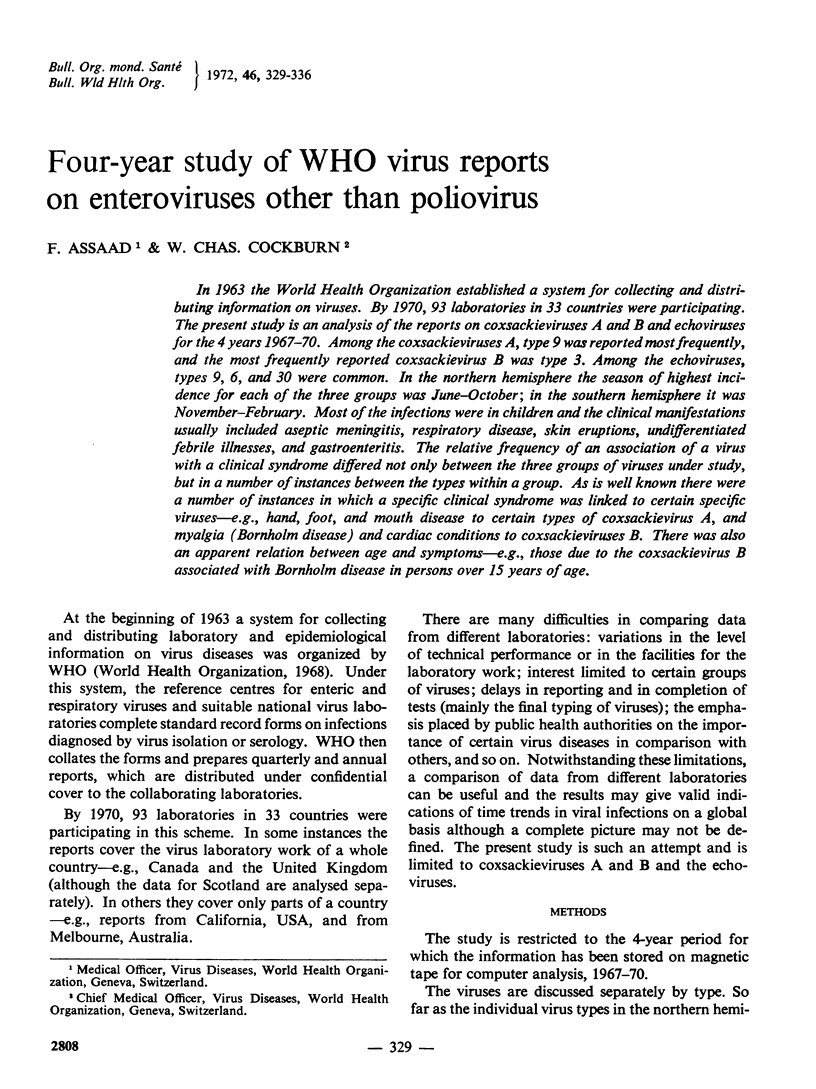
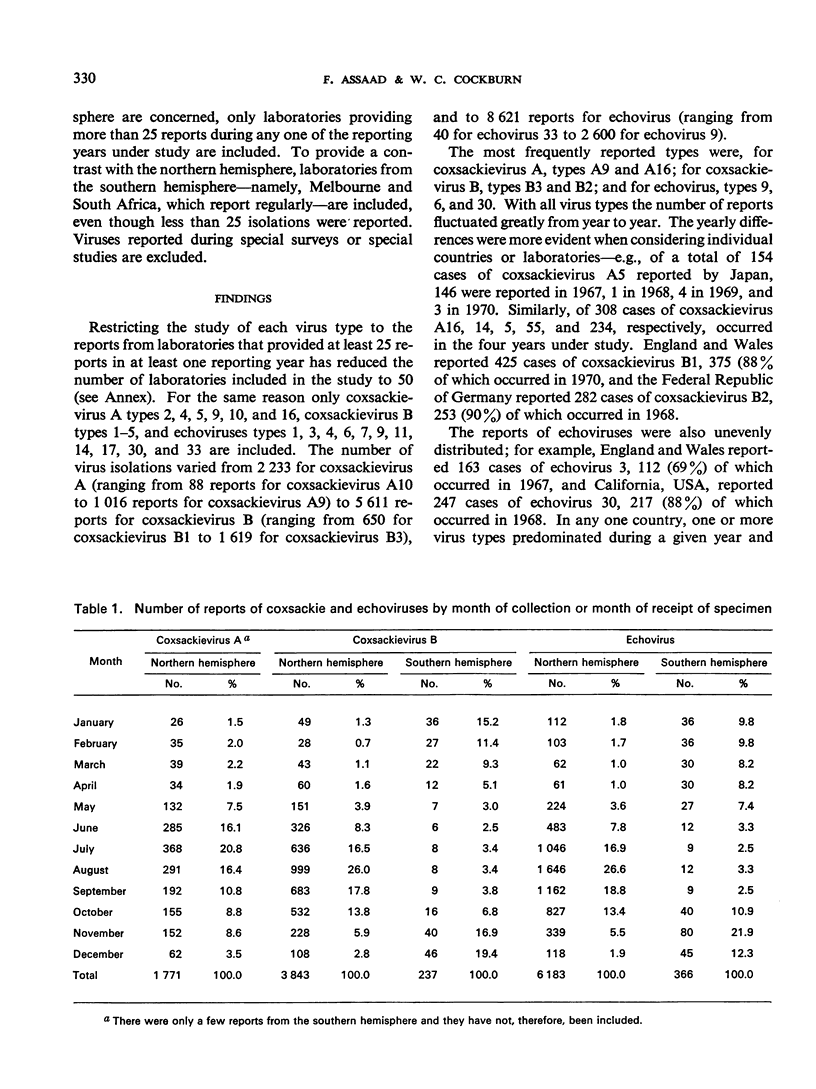
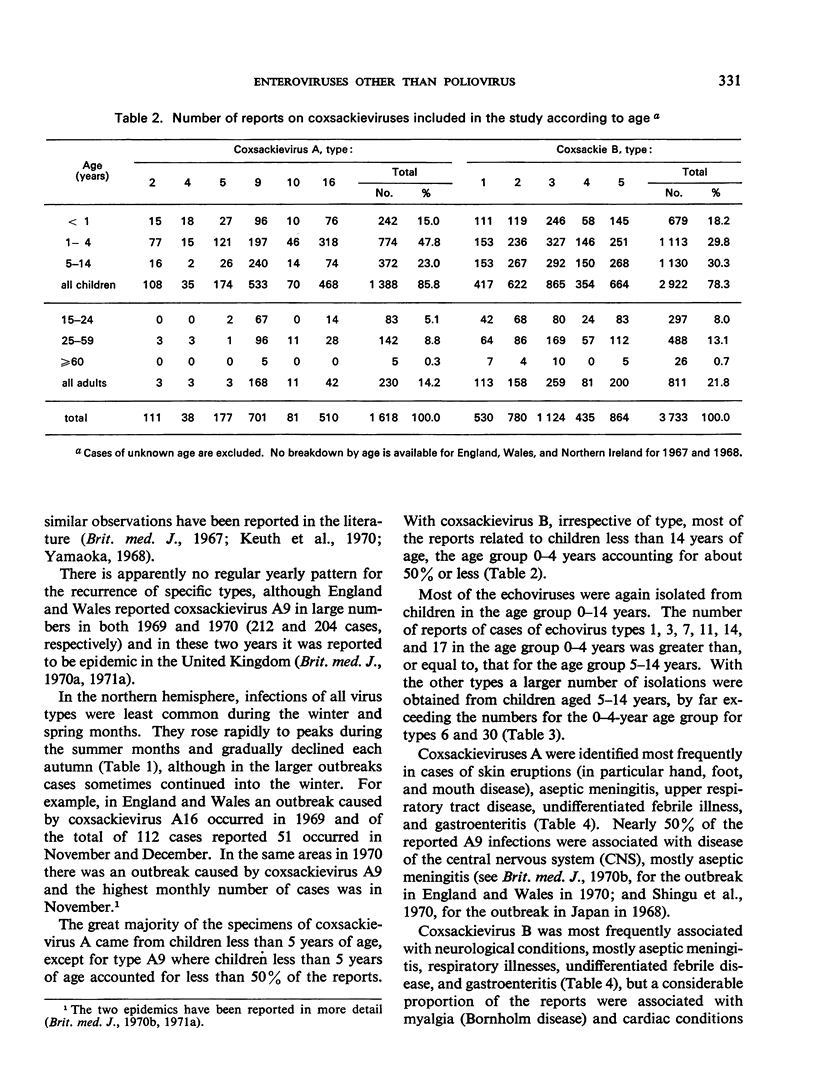
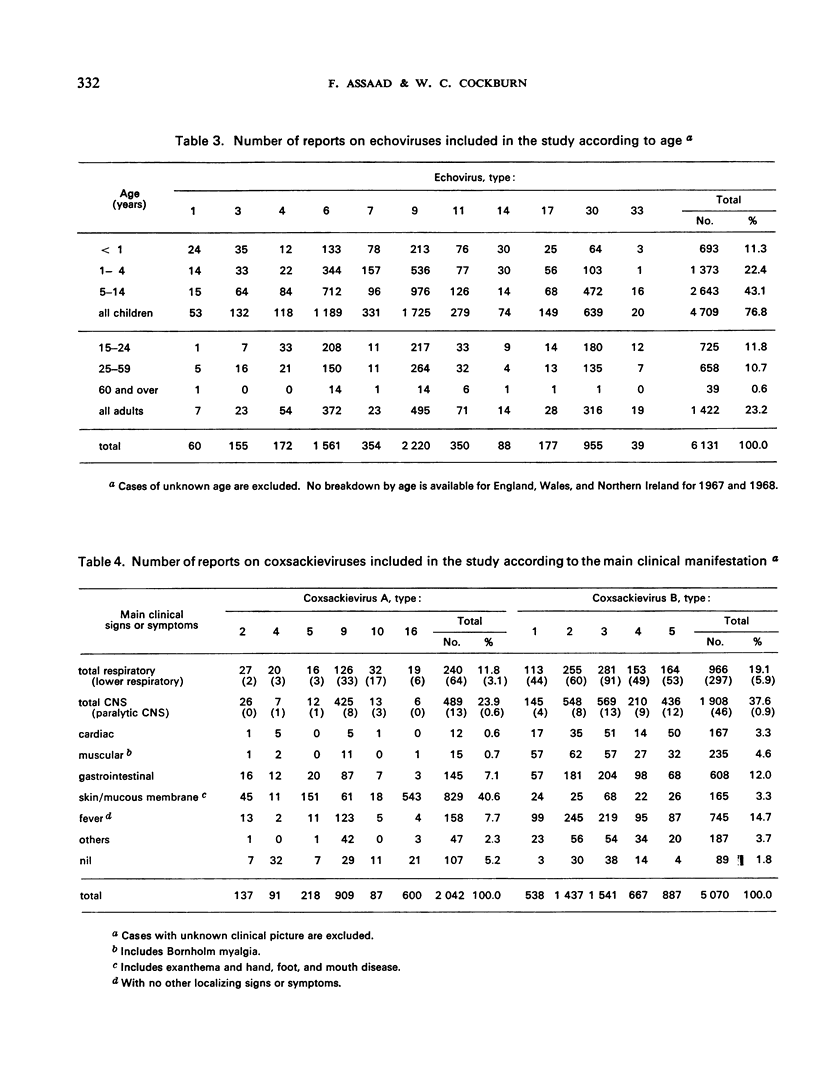
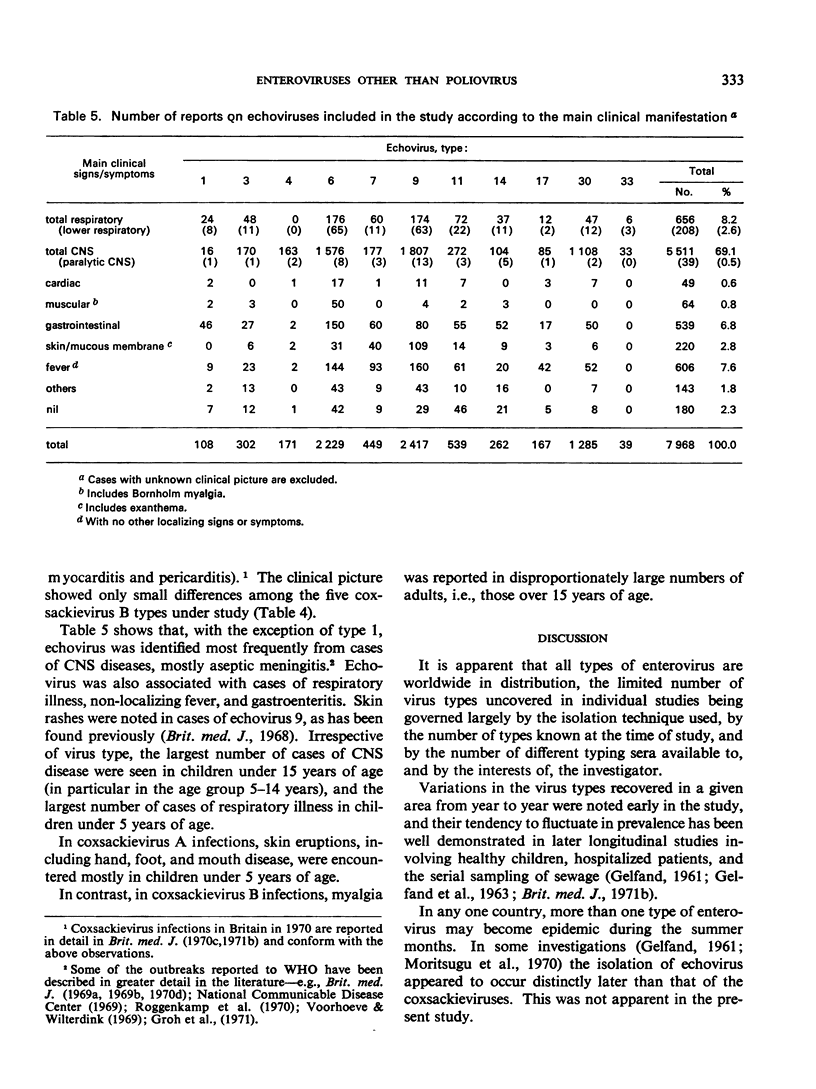
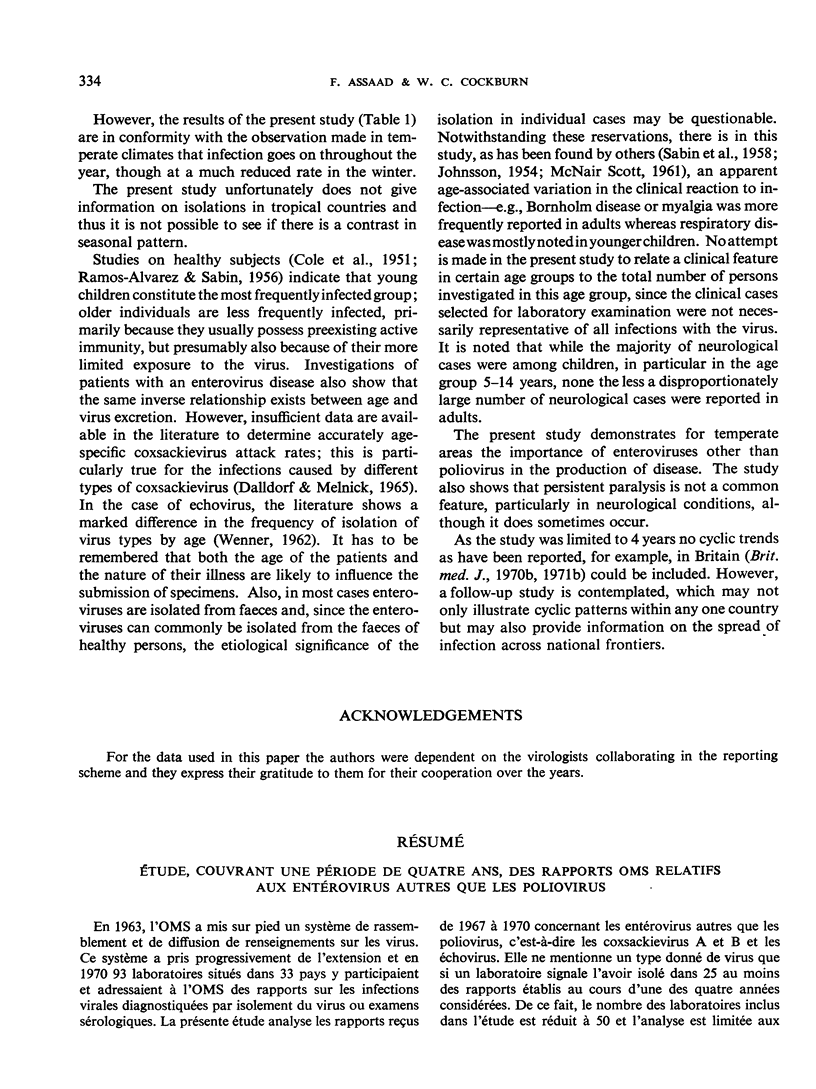
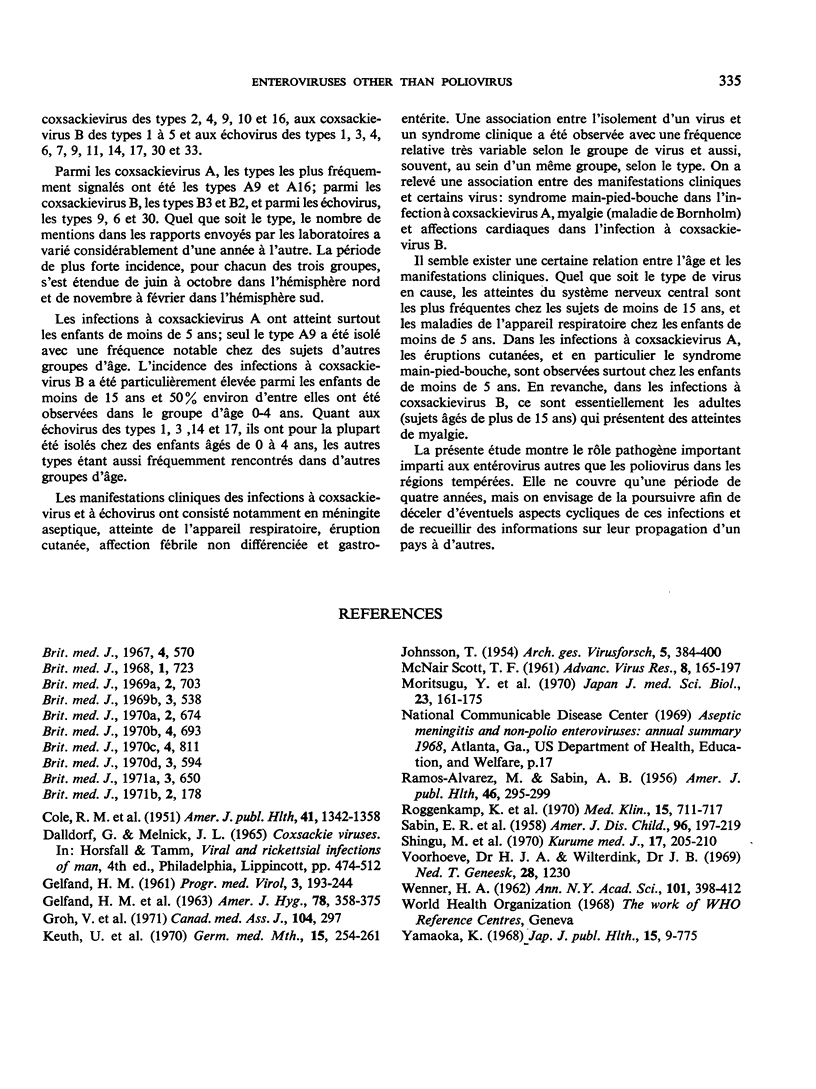
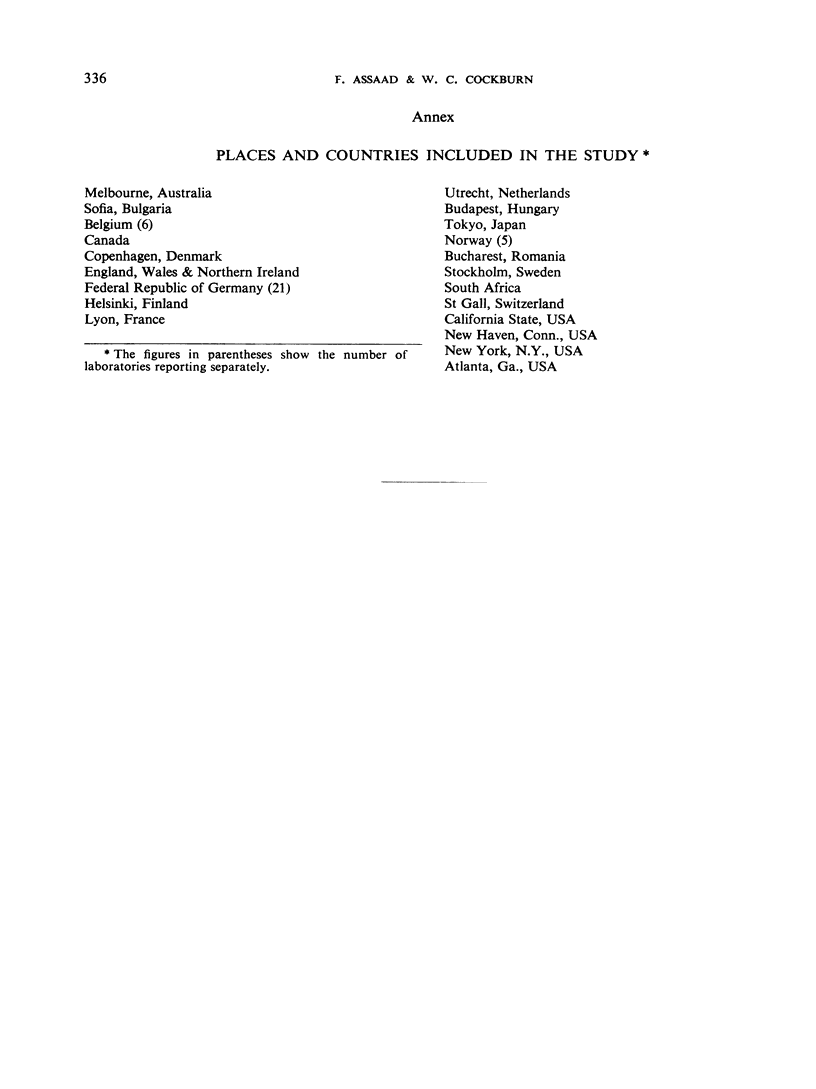
Selected References
These references are in PubMed. This may not be the complete list of references from this article.
- Akama K., Otani S. Clostridium perfringens as the flora in the intestine of healthy persons. Jpn J Med Sci Biol. 1970 Jun;23(3):161–175. doi: 10.7883/yoken1952.23.161. [DOI] [PubMed] [Google Scholar]
- COLE R. M., BELL J. A., BEEMAN E. A., HUEBNER R. J. Studies of Coxsackie viruses: observations on epidemiological aspects of Group A viruses. Am J Public Health Nations Health. 1951 Nov;41(11 Pt 1):1342–1358. doi: 10.2105/ajph.41.11_pt_1.1342. [DOI] [PMC free article] [PubMed] [Google Scholar]
- GELFAND H. M., HOLGUIN A. H., MARCHETTI G. E., FEORINO P. M. A CONTINUING SURVEILLANCE OF ENTEROVIRUS INFECTIONS IN HEALTHY CHILDREN IN SIX UNITED STATES CITIES. I. VIRUSES ISOLATED DURING 1960 AND 1961. Am J Hyg. 1963 Nov;78:358–375. doi: 10.1093/oxfordjournals.aje.a120355. [DOI] [PubMed] [Google Scholar]
- GELFAND H. M. The occurrence in nature of the Coxsackie and ECHO viruses. Prog Med Virol. 1961;3:193–244. [PubMed] [Google Scholar]
- JOHNSSON T. Family infections by Coxsackie viruses. Arch Gesamte Virusforsch. 1954 Apr 12;5(4):384–400. doi: 10.1007/BF01243008. [DOI] [PubMed] [Google Scholar]
- RAMOS-ALVAREZ M., SABIN A. B. Intestinal viral flora of healthy children demonstrable by monkey kidney tissue culture. Am J Public Health Nations Health. 1956 Mar;46(3):295–299. doi: 10.2105/ajph.46.3.295. [DOI] [PMC free article] [PubMed] [Google Scholar]
- Roggenkamp K., Linzenmeier G., Kuwert E. Virusmeningitis im Kindesalter. Häufung seröser Meningitiden durch E-Viren der Typen 30 und 6 im Jahre 1967. Med Klin. 1970 Apr 10;65(15):711–717. [PubMed] [Google Scholar]
- SABIN A. B., KRUMBIEGEL E. R., WIGAND R. ECHO type 9 virus disease. AMA J Dis Child. 1958 Aug;96(2):197–219. doi: 10.1001/archpedi.1958.02060060199011. [DOI] [PubMed] [Google Scholar]
- Voorhoeve H. W., Wilterdink J. B. Enkele virologische, epidemiologische en klinische waarnemingen tijdens een ECHO-virus type 6 epidemie. Ned Tijdschr Geneeskd. 1969 Jul 12;113(28):1230–1234. [PubMed] [Google Scholar]
- WENNER H. A. The ECHO viruses. Ann N Y Acad Sci. 1962 Nov 30;101:398–412. doi: 10.1111/j.1749-6632.1962.tb18879.x. [DOI] [PubMed] [Google Scholar]


